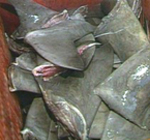
10 food festivals you'll want to know
Food festivals vary in every country and culture where food is celebrated, venerated and appreciated. Some festivals hold events that are sometimes fun and entertaining, ...
More


 | Peppercorn-shape - Acini de Pepe - Perfect for use in soup recipes. |
 | Bell-shape - Campanelle - Shaped like a small cone with ruffled edges. Great with meat, cream, vegetable or oil-based sauces. Also pretty in pasta salads. |
 | Thimble-shape - Ditalini - Can be used as a base for any dish, baked, stirred in to soups or used in salads. |
 | Lily-shape - Gigli - A fluted-shaped pasta rolled into a cone-shaped flower. Good for heavier sauces like cheese, meat and tomato or used in casseroles. |
 | Ear-shape - Orecchiette - These 'little ears' are usually served with thick, chunky sauces or in salads. |
 | Radiator-shape - Radiatori - This ruffled, ridged shape works well baked in casseroles, or used in salads and soups. |
 | Ribbon-shape - Reginette - A wide, flat ribbon pasta with rippled edges on both sides. |
 | Toothpick-shape - Fideo - Short, thin strands of pasta that are slightly curved. Commonly used in various soup recipes. |

10 food festivals you'll want to know
Food festivals vary in every country and culture where food is celebrated, venerated and appreciated. Some festivals hold events that are sometimes fun and entertaining, ...
More

'no' to sharks' fin
Singapore-based supermarket chain, Cold Storage, will stop selling sharks fin and shark-related products. Cold Storage, which has 42 outlets across the country, ...
More

going to singapore to makan?
In Singapore, the locals can food-talk 24/7, and it’s understandable; the food offerings are endless! Fine dining to hawker fare, one can get a fever just thinking ...
More